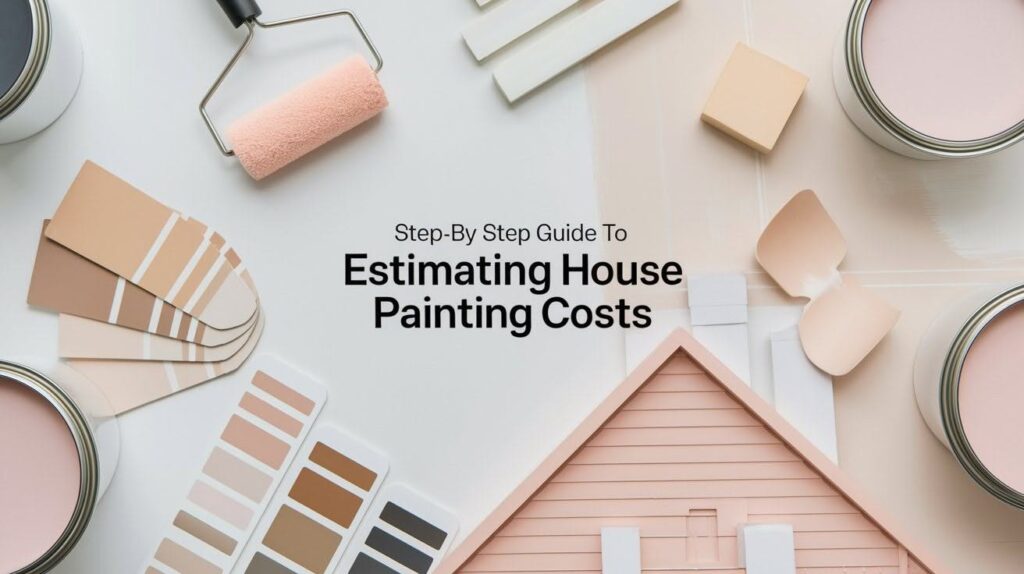After helping homeowners plan their painting projects for over a decade, I’ve seen countless budgets go sideways due to poor cost estimation. Nothing frustrates me more than watching families overspend or compromise on quality because they didn’t know what to expect upfront.
This comprehensive guide draws from real project data and contractor insights to give you the tools for accurate painting cost calculations. You’ll learn to break down material expenses, labor rates, and hidden fees that often catch people off guard.
Interior painting typically runs $2-6 per square foot, while exterior projects range from $3-7 per square foot. Understanding these fundamentals plus the factors that drive costs up or down will help you budget confidently and avoid costly surprises during your home improvement project.
Factors That Affect House Painting Costs
Size and Layout of the Home
Bigger homes cost more, but it’s not just square footage. Vaulted ceilings and intricate trim require scaffolding and extra labor hours. A simple 2,000-square-foot ranch costs far less than a 2,000-square-foot home with multiple rooms and architectural details.
Condition of Surfaces
Fresh drywall is easy to paint, while damaged walls with peeling paint or nail holes require extensive prep work. Textured surfaces like popcorn ceilings use more paint and need special techniques that increase costs.
Location and Accessibility
Urban contractors charge more due to higher overhead, while rural areas offer lower rates but fewer painters. Multi-story homes and tight spaces require special equipment that slows progress and increases your bill.
Time of Year
Spring and fall are peak seasons with prices 10-20% higher due to demand. Winter interior jobs often come with discounts, while exterior work depends on weather. Flexible timing can save you money.
Guide to Estimating House Painting Costs
Step 1: Determine the Scope of the Project
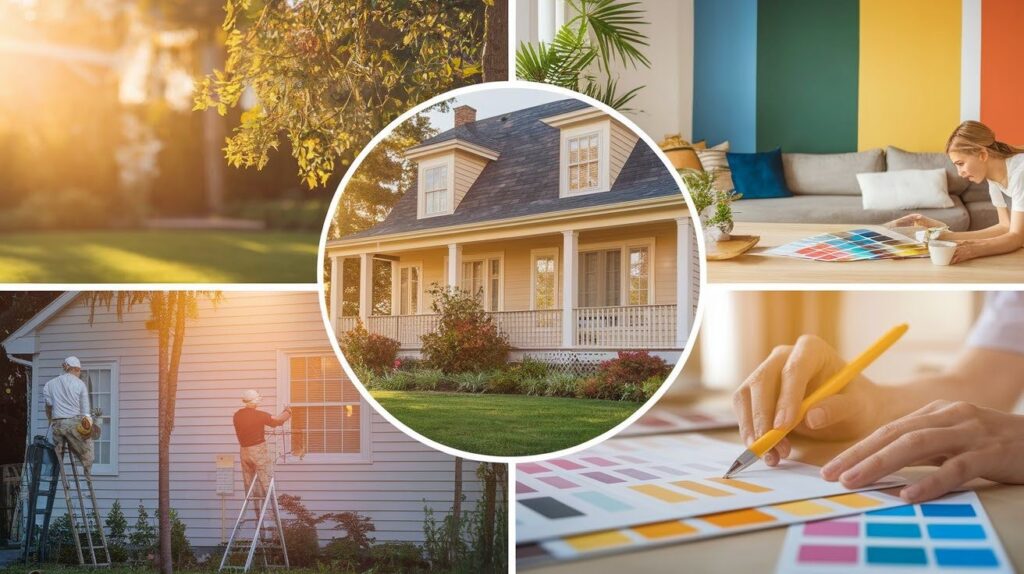
Start by clarifying exactly what you’re painting – interior jobs need different materials than exterior projects. Decide between whole-house painting or specific rooms, since sometimes an accent wall or fresh trim delivers the biggest visual impact for your budget.
Think about your goals: refreshing tired rooms, increasing home value, or preparing for sale. Each objective influences material choices and budget allocation differently.
A quick refresh might need mid-range paint, while preparing for sale often requires premium materials that photograph well and appeal to buyers.
Step 2: Measure the Paintable Area
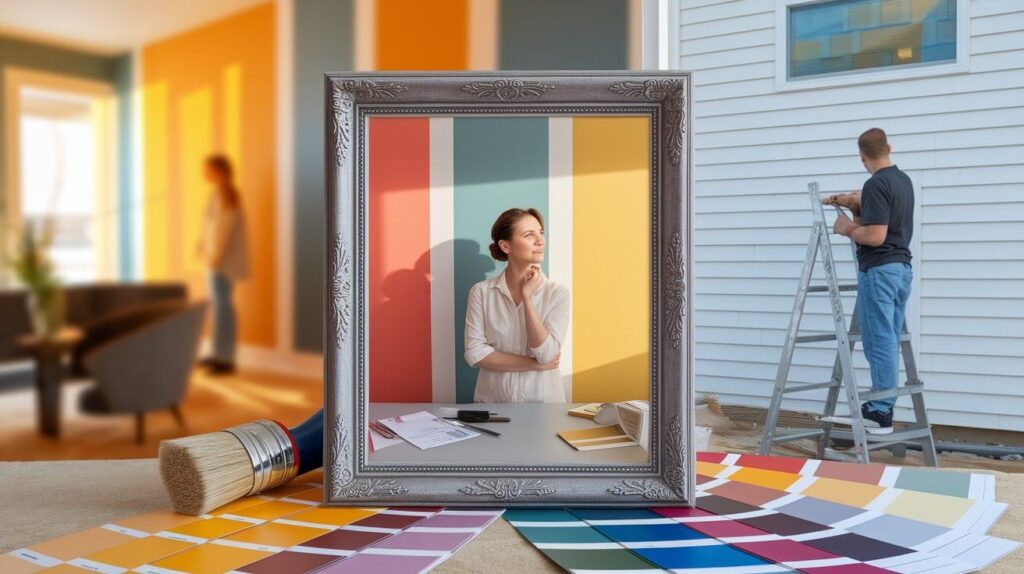
Calculate wall square footage by multiplying length times height for each surface you plan to paint. Don’t forget to include ceilings if you’re painting them too. Subtract windows, doors, and built-ins from your total – you won’t be painting these areas, so don’t buy extra paint for them.
Double-check your measurements since paint calculations depend on accuracy. I’ve seen homeowners end up with way too much paint because they rushed through measuring.
Most paint covers 350-400 square feet per gallon, so precise measurements prevent costly over-ordering and ensure you have enough material to complete the job without emergency store runs.
Step 3: Choose the Type and Quality of Paint
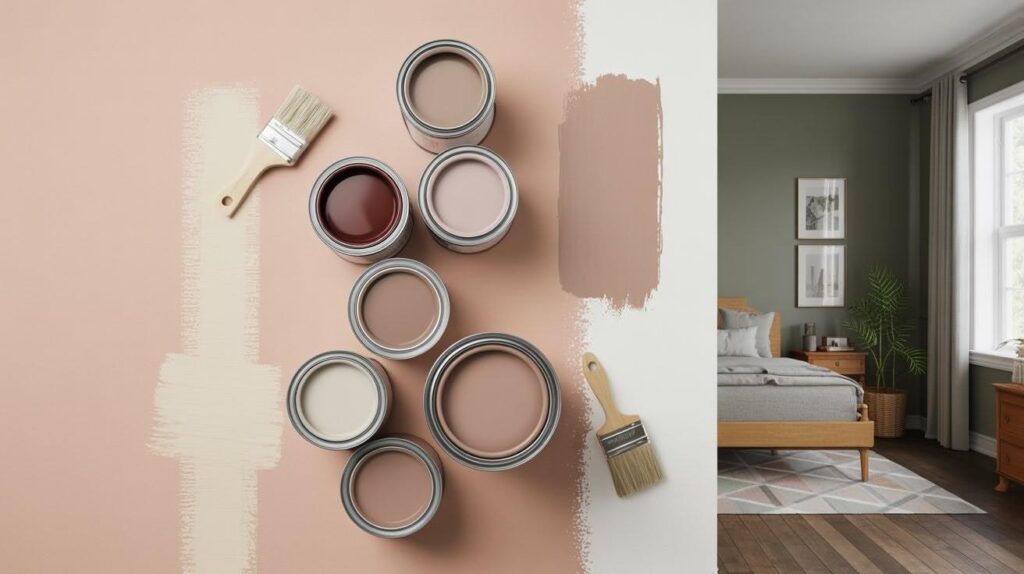
Paint finishes affect both appearance and durability. Matte hides imperfections but shows scuffs. Semi-gloss works well for trim and high-moisture areas. Premium paints cost 30-50% more but provide better coverage and longevity, often saving money long-term.
Consider your home’s usage patterns when selecting finishes. High-traffic areas benefit from washable finishes, while bedrooms can use less expensive matte options.
Step 4: Factor in Labor Costs
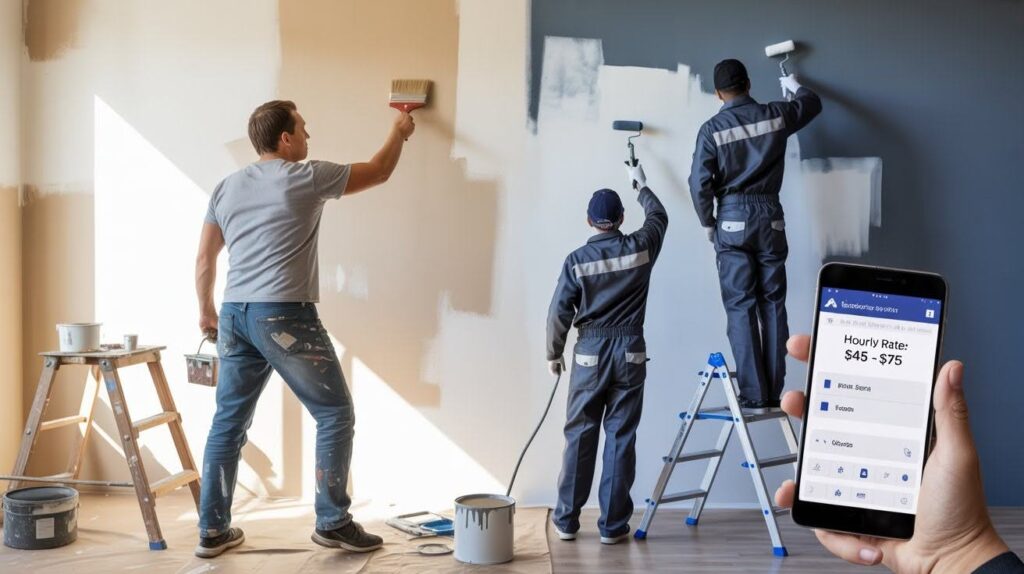
Professional painters charge $2-6 per square foot depending on location and complexity. DIY eliminates labor costs but requires your time and skill. Consider whether potential savings justify the physical effort and time commitment involved in doing it yourself.
Factor in your skill level and available time realistically. Poor DIY execution often costs more to fix than hiring professionals initially.
Step 5: Consider Prep Work and Repairs
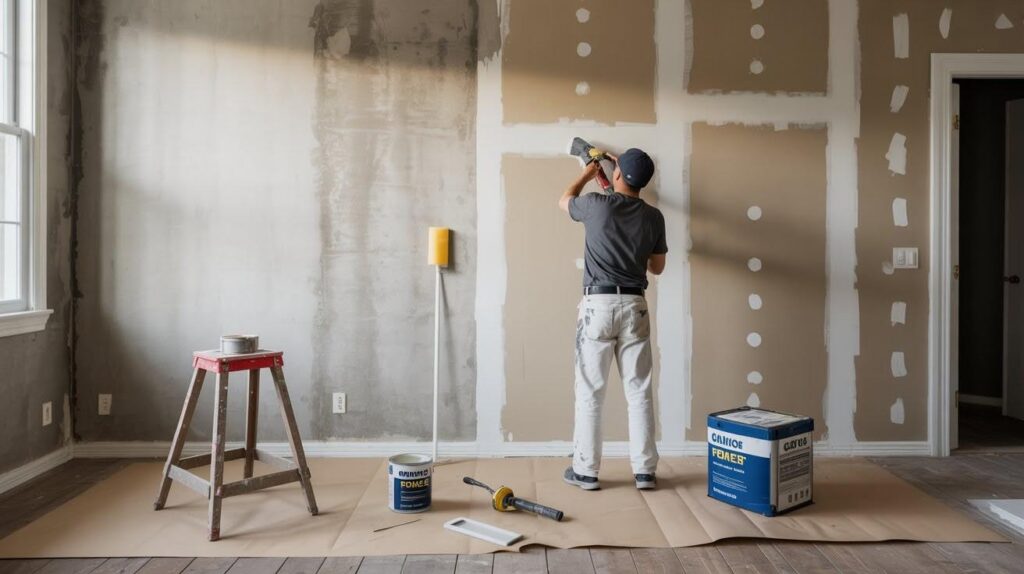
Proper surface preparation ensures quality results. Budget time and materials for cleaning, sanding, priming, filling nail holes, and caulking gaps. Prep work often takes longer than actual painting but significantly impacts the final appearance and durability.
Older homes typically require more extensive preparation work. Skipping proper prep leads to paint failure and costly reapplication within months.
Step 6: Account for Materials and Supplies
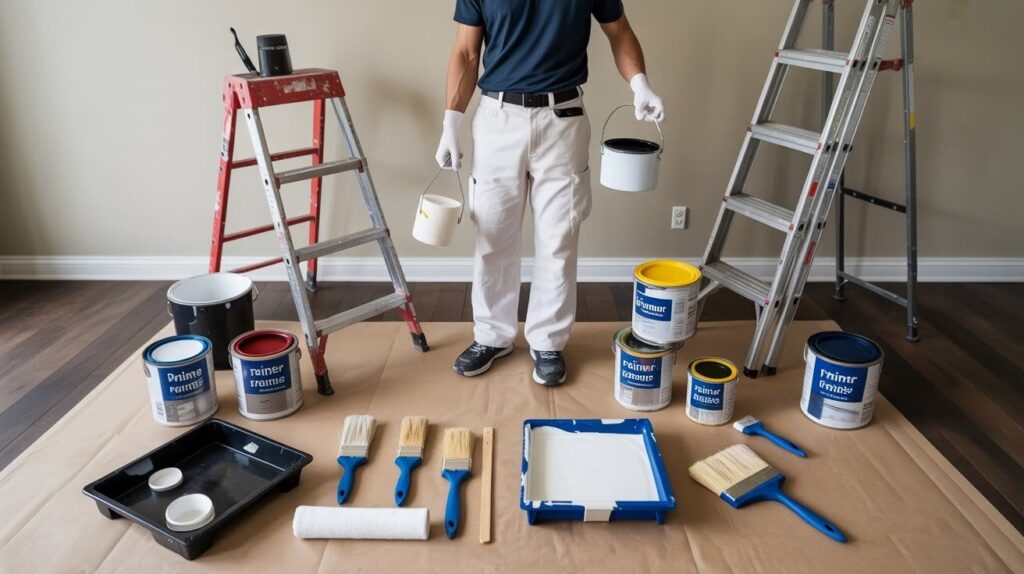
Beyond paint, you need brushes, rollers, drop cloths, tape, and potentially ladders. Quality tools improve results and efficiency. Include primer costs when necessary – skipping it on difficult surfaces leads to poor coverage and color problems.
Cheap brushes leave streaks and shed bristles into wet paint. Investing in quality applicators saves time and delivers professional-looking results.
Step 7: Add in Miscellaneous Expenses
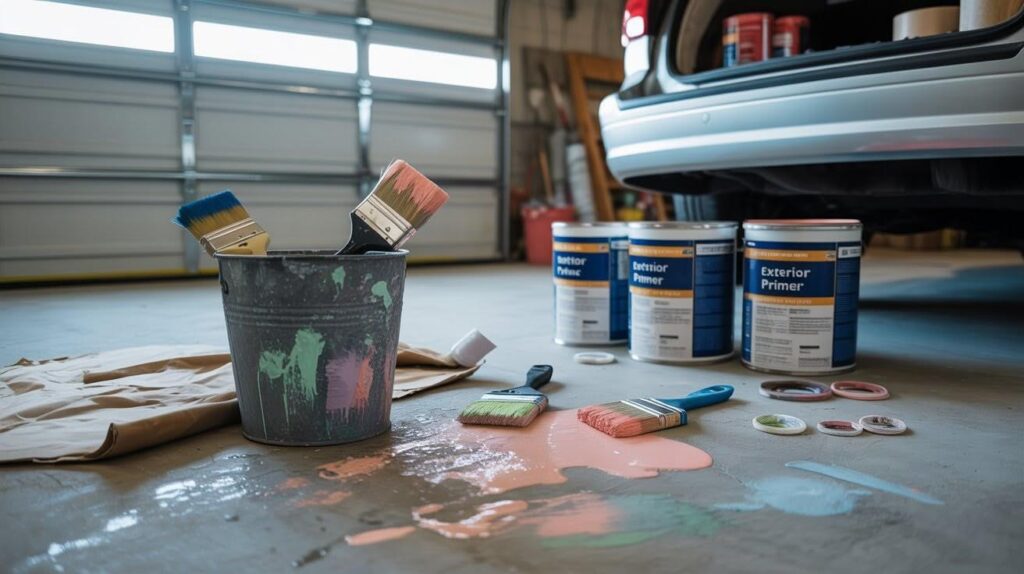
Small projects often carry minimum charges for travel and setup. Factor in cleanup costs and proper paint disposal, especially important for lead-based products in older homes. Some areas have specific disposal requirements that add to overall expenses.
Plan for unexpected material needs during the project. Running short on paint mid-job creates color matching challenges and delays.
Step 8: Get Multiple Quotes
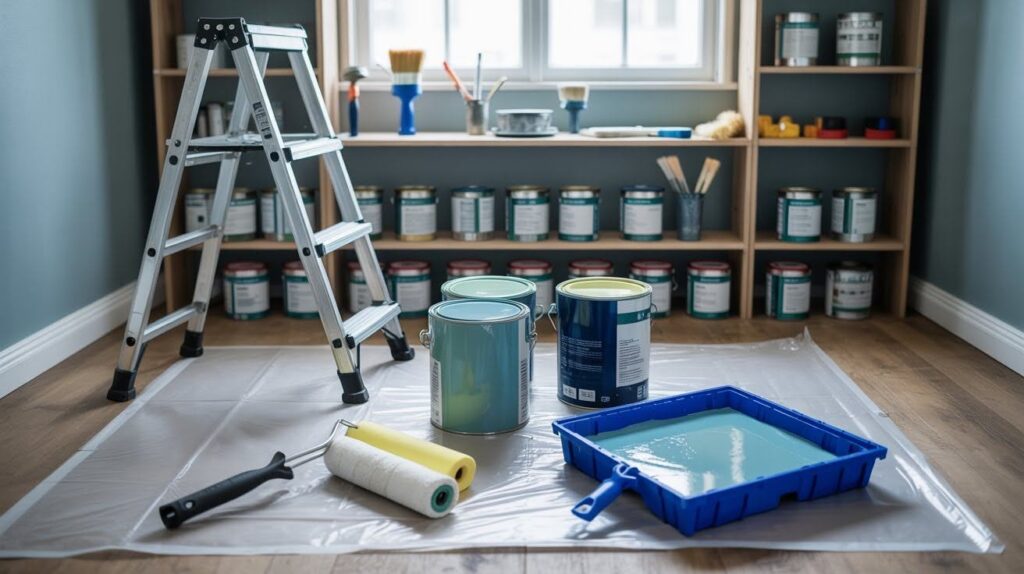
Quality quotes detail labor, materials, prep work, and timeline. Verify licenses, insurance, and warranties. Check recent work and references. The cheapest bid isn’t always best value – skilled workmanship prevents costly touch-ups and premature repainting.
Ask about paint brand preferences and application methods. Different contractors use varying techniques that affect final appearance and longevity.
Step 9: Create a Final Budget Estimate
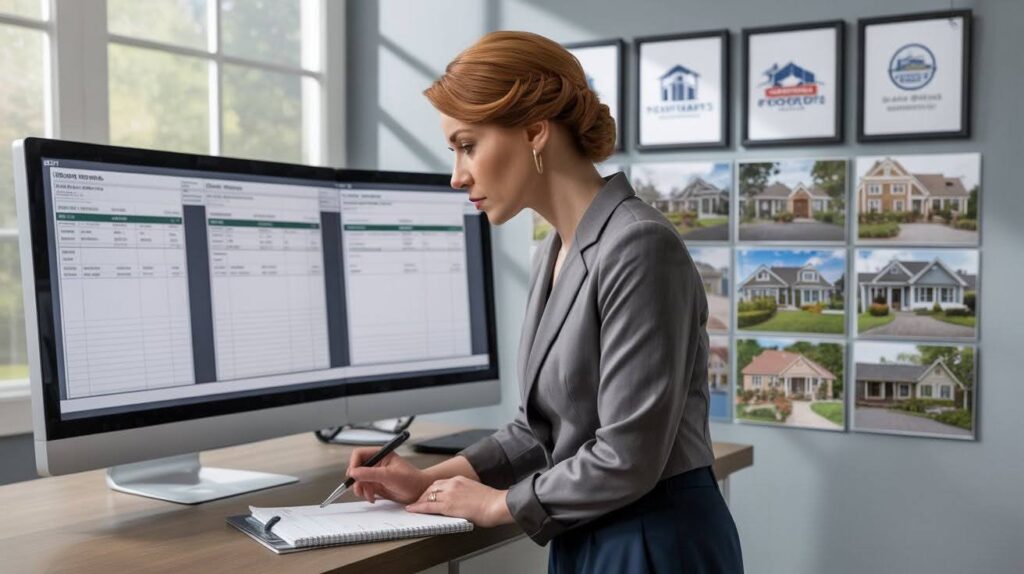
Typical 2,000-square-foot homes cost $3,000-8,000 for interior painting, $5,000-12,000 for exterior work. Include materials, labor, and basic prep in estimates.
Add 10-15% contingency for unexpected issues – painting projects always reveal surprises requiring additional work. Document your estimates clearly for future reference. Well-planned budgets prevent mid-project financial stress and ensure quality completion.
Pro Tips for Saving Money and Time
Buy Paint in Bulk
I always recommend purchasing all your paint at once, even for multi-room projects. Most retailers offer 15-20% discounts on orders over five gallons.
More importantly, you’ll avoid color matching issues, paint batches can vary slightly, and nothing’s more frustrating than running out mid-project only to find the new gallon doesn’t quite match.
Schedule Off-Season Projects
Winter interior projects often come with significant savings. When outdoor work slows down, many painters drop their rates by 10-25% to keep crews busy. I’ve seen homeowners save $500-1,000 on whole-house projects just by scheduling during slower months.
Do Some Prep Work Yourself
Simple tasks like moving furniture, cleaning walls, and basic taping can cut 2-3 hours off professional labor costs. That translates to $100-200 savings per room. Just avoid complex prep like patching large holes or primer application leave the technical work to the pros.
Choose Colors Strategically
Neutral colors hide imperfections better and appeal to future buyers if you plan to sell. Dark colors often need extra coats for even coverage, increasing both paint and labor costs. I’ve seen dramatic color changes require primers plus three finish coats instead of the standard two.
Use Online Calculators
Paint manufacturer websites offer accurate coverage calculators that account for surface texture and paint type. These tools prevent the common mistake of overbuying-I see homeowners purchase 30% more paint than needed, wasting $200-300 on larger projects.
Conclusion
After walking through countless estimates with homeowners over the years, I’ve learned that successful painting projects start with thorough planning and realistic budgets.
The nine steps we’ve covered from measuring square footage to factoring in contingency costs will give you the confidence to make informed decisions.
Take your time gathering quotes, ask detailed questions, and don’t automatically choose the lowest bid. I’ve seen too many projects go wrong when corners get cut. Remember to include that 15% buffer for surprises, because they always happen.
Smart planning now prevents headaches later. Whether you choose DIY or professional help, understanding these cost factors puts you in control of your project’s success. Your home deserves quality work, and your budget deserves protection through careful preparation.
Frequently Asked Questions
How much does it cost to paint a 1,500 square foot house?
Interior painting typically costs $2,500-6,000, while exterior ranges from $4,000-9,000. Costs vary based on paint quality and regional labor rates.
Should I hire professionals or paint myself?
DIY saves 50-70% on labor but requires time and skill. Professionals work faster with better results and warranties.
How long does house painting take?
Interior projects take 3-5 days, exterior jobs require 5-10 days. The timeline depends on prep work and weather conditions.
What’s the difference between cheap and expensive paint?
Premium paints offer better coverage and last 2-3 times longer. Higher quality often proves more cost-effective long-term.
When is the best time to paint exterior surfaces?
Late spring through early fall provides optimal conditions. Avoid extreme temperatures, humidity, and rainy weather for best results.

